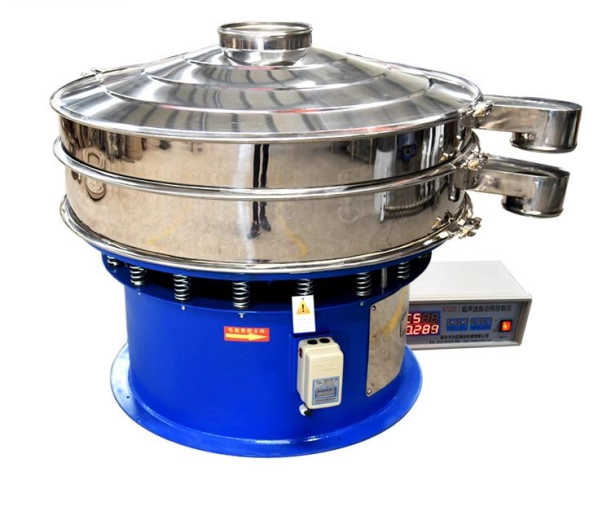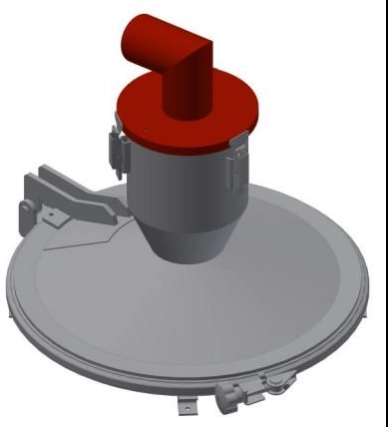Content Menu
● Understanding Powder Coating and Its Importance
>> What is Powder Coating?
>> Why Powder Coating Matters for Manufacturers
● The Benefits of a Fully Automated Powder Coating Plant
>> Increased Production Efficiency
>> Enhanced Coating Quality Consistency
>> Labor Cost Reduction and Safety Improvement
>> Environmental Sustainability
>> Lower Operational Costs
● Core Components of a Fully Automated Powder Coating Plant
>> Pre-Treatment Systems
>> Robotic Powder Application
>> Conveyor and Handling Systems
>> Curing Ovens with Automation Controls
>> Quality Control and Monitoring
● How Automation Boosts Your ROI
>> Higher Output with Lower Costs
>> Better Resource Management
>> Improved Capacity Utilization
>> Scalability for Market Demands
>> Enhanced Customer Satisfaction
● Implementing a Fully Automated Powder Coating Plant
>> Assessment and Planning
>> Choosing the Right Technology
>> Installation and Commissioning
>> Maintenance and Continuous Improvement
>> Training and Workforce Development
● Challenges and Considerations
>> Initial Investment Cost
>> System Complexity
>> Integration with Existing Processes
>> Change Management
● Case Studies: Success Stories of Automation in Powder Coating
>> Automotive Parts Manufacturer
>> Appliance Manufacturer
● FAQs About Fully Automated Powder Coating Plants
In today's competitive manufacturing landscape, maximizing return on investment (ROI) is crucial for any business. One powerful way to achieve this is by adopting a fully automated powder coating plant. Automation in powder coating not only improves efficiency and quality but also reduces costs and environmental impact. This article explores how a fully automated powder coating plant can boost your ROI, the key components involved, and essential considerations for implementation.

Understanding Powder Coating and Its Importance
What is Powder Coating?
Powder coating is a finishing process where powdered paint material is applied to a surface and then cured under heat to form a durable, protective coating. Compared to traditional liquid painting, powder coating offers enhanced durability, environmental friendliness, and cost savings due to minimal overspray and waste.
Why Powder Coating Matters for Manufacturers
Manufacturers prefer powder coating for its superior finish quality, resistance to corrosion, and ability to coat complex shapes evenly. It is widely used in industries such as automotive, appliances, furniture, and construction.
The Benefits of a Fully Automated Powder Coating Plant
Increased Production Efficiency
Automation dramatically speeds up the coating process. A fully automated plant can handle multiple tasks simultaneously — from pre-treatment to powder application and curing — reducing cycle times and throughput bottlenecks.
Enhanced Coating Quality Consistency
Automated systems use precise control technologies, such as robotic arms and electrostatic spray guns, ensuring uniform powder application. This consistency reduces defects and rework costs, improving overall product quality.
Labor Cost Reduction and Safety Improvement
By automating repetitive and hazardous tasks, manufacturers reduce labor expenses and workplace accidents. Employees can focus on higher-value activities, while automation ensures safety in handling powders and solvents.
Environmental Sustainability
Automated powder coating systems optimize powder usage and recycle overspray efficiently. They minimize volatile organic compounds (VOC) emissions compared to liquid paints, helping companies meet environmental regulations and reduce waste disposal costs.
Lower Operational Costs
Automation improves energy efficiency through optimized curing cycles and targeted powder usage. Maintenance costs also decrease due to predictive diagnostics available in modern automated systems.
Core Components of a Fully Automated Powder Coating Plant
Pre-Treatment Systems
Before coating, parts undergo cleaning and surface preparation via automated pre-treatment lines. This step is critical for adhesion and corrosion resistance and includes washing, rinsing, and drying stations, all managed by software controls.
Robotic Powder Application
Robotic arms equipped with electrostatic spray guns apply powder coating with high precision. These robots adjust parameters like spray distance and angle in real time, ensuring even coverage and minimal waste.
Conveyor and Handling Systems
Parts are transported seamlessly through different stages by automated conveyor systems. These systems reduce manual handling, lowering the risk of damage and maintaining high throughput rates.
Curing Ovens with Automation Controls
After coating, parts enter automated curing ovens where temperature and time are carefully controlled. Advanced ovens use energy-saving technologies, such as infrared heating, to reduce cycle times and energy consumption.
Quality Control and Monitoring
Integrated sensors and cameras check coating thickness, surface defects, and cure quality in real time. Automated feedback loops allow immediate adjustments, maintaining consistent quality standards.
How Automation Boosts Your ROI
Higher Output with Lower Costs
Faster production cycles and reduced rework mean you can produce more units in less time at a lower cost, improving profit margins significantly.
Better Resource Management
Automated powder usage and energy-efficient curing reduce material and utility expenses, lowering overall operational costs.
Improved Capacity Utilization
With automation's reliability, downtime due to human error or maintenance is minimized, maximizing plant uptime and asset utilization.
Scalability for Market Demands
Fully automated plants easily adapt to fluctuating production volumes and new product types, helping your business grow without major new investments.
Enhanced Customer Satisfaction
Consistent high-quality finishes increase product value and customer loyalty, leading to repeat business and positive market reputation.
Implementing a Fully Automated Powder Coating Plant
Assessment and Planning
Begin by evaluating current processes and ROI targets. Consider space, budget, and product specifications when choosing automation levels and equipment.
Choosing the Right Technology
Select technologies compatible with your product mix. Partner with reputable suppliers who offer customized solutions integrating robotics, control software, and quality monitoring.
Installation and Commissioning
Work with experienced installation teams to ensure smooth integration. Conduct thorough testing and employee training during commissioning for optimal performance.
Maintenance and Continuous Improvement
Implement predictive maintenance using IoT sensors and data analytics. Continuously monitor plant performance to identify and act on improvement opportunities.
Training and Workforce Development
Train staff to operate and maintain automated equipment efficiently. Skilled workers are essential to maximize automation benefits and keep production running smoothly.
Challenges and Considerations
Initial Investment Cost
Automated powder coating plants require significant capital investment. However, the ROI through cost savings and productivity gains typically justifies this over time.
System Complexity
Automation systems are complex and require robust IT infrastructure and skilled technicians for troubleshooting and upgrades.
Integration with Existing Processes
Ensure that the new automated plant can be seamlessly integrated with other manufacturing processes like fabrication and assembly.
Change Management
Employee adaptation to new technology is critical. Communicate benefits clearly and provide continuous support during the transition.
Case Studies: Success Stories of Automation in Powder Coating
Automotive Parts Manufacturer
An automotive parts supplier automated its powder coating line, increasing throughput by 40% while reducing rework costs by 30%, significantly boosting profitability.
Appliance Manufacturer
A home appliance company implemented robotic coating systems, reducing labor costs by 25% and improving product finish quality, which led to higher customer satisfaction ratings.

FAQs About Fully Automated Powder Coating Plants
1. What is the typical ROI timeline for automating a powder coating plant?
ROI often occurs within 2 to 5 years depending on plant size and automation level, driven by labor savings and improved efficiency.
2. Can automated systems handle different product shapes and sizes?
Yes, modern robotic and conveyor systems are highly adaptable to diverse product lines with minimal reprogramming.
3. How does automation affect environmental compliance?
Automation reduces overspray and VOC emissions, making it easier to meet strict environmental regulations.
4. What maintenance is required for automated powder coating plants?
Routine cleaning, sensor calibration, and software updates are essential. Predictive maintenance helps prevent unexpected downtime.
5. Is workforce reduction inevitable with automation?
Automation shifts roles rather than simply reducing jobs. Staff are needed for machine operation, quality control, and technical support.
Hot Tags: China, Global, OEM, private label, manufacturers, factory, suppliers, manufacturing company










































 .
. 